The world-famous U.S. Navy Fighter Weapons School (NFWS), better known as TOPGUN, has started down the path of one of the biggest evolutions in its esteemed history. The school has graduated its first two F-35C Lightning II pilots, the first fleet aviators to train at this advanced level in the cockpit of a naval stealth fighter.
The 13-week Strike Fighter Tactics Instructor (SFTI) course is run by the Naval Aviation Warfighting Development Center (NAWDC) at Naval Air Station Fallon, Nevada. TOPGUN is an individual-level syllabus that combines significant amounts of live flying with classroom academics and is designed to teach handpicked fleet aviators the latest advanced tactical skills and how to impart that knowledge onto their fellow pilots.
U.S. Marine Corps Major Derek Heinz and U.S. Navy Lieutenant William Goodwin III completed the course in May and have now returned to their units at Naval Air Station Lemoore, in California. Heinz is assigned to Strike Fighter Squadron 125 (VFA-125), the “Rough Raiders,” a training unit, while Goodwin is from VFA-147, the “Argonauts,” the Navy’s first F-35C fleet unit.
The graduates become ‘patch wearers’ having earned the coveted red and blue TOPGUN patch, versed in the latest tactics and techniques that the schoolhouse has to offer. Then they return to the fleet and spread what they have learned around their ready rooms.
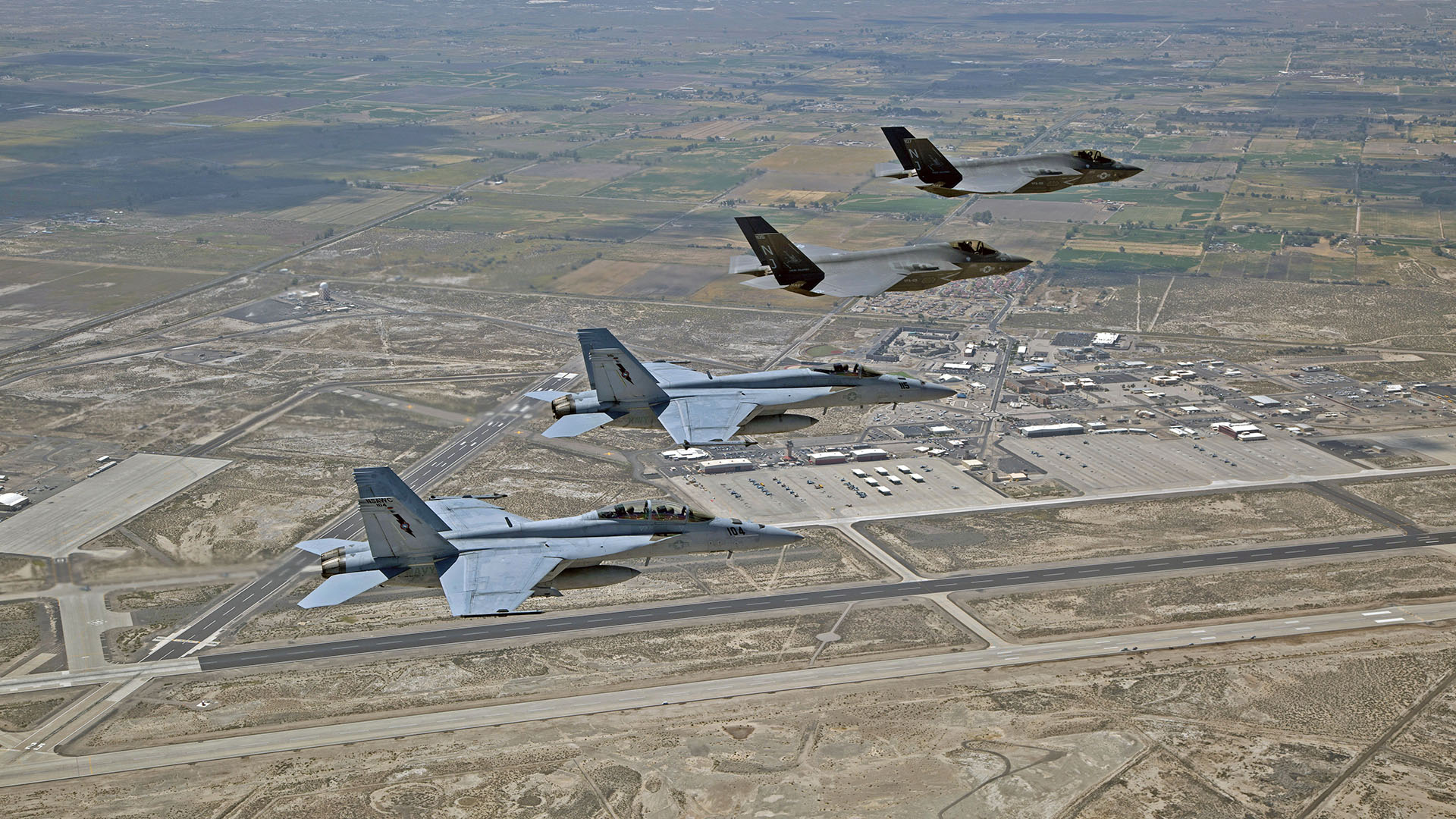
The first two F-35C pilots graduated from Class 02-20. The arrival of Lightning II students marks the first major platform evolution for TOPGUN since Class 05-01 became the first to go through with the F/A-18E/F Super Hornet in mid-2001. Even then, the Super Hornet syllabus was a variation of the existing F/A-18A/C/D Hornet program, with early “Rhinos” sharing many of the same systems and tactics.
The arrival of the dual-role Hornet triggered a move towards the addition of air-to-ground instruction at TOPGUN. In 1993, it expanded the course from a five-week syllabus to a six-week one with the addition of an air-to-ground phase. Two years later, TOPGUN moved away from the model of training a crew from each squadron as it debuted the SFTI course, which to this day involves aircrews to Fallon and then redistributing some of them between a range of possible fleet assignments. It has since evolved into the current 13-week course structure.
So, the arrival of the F-35 is one of the biggest changes for TOPGUN since the ‘Legacy’ Hornet course was first fielded at TOPGUN in the mid-1980s after the type’s introduction into service. The last F-14 Tomcat students passed through TOPGUN in 2003, and the era of the Lightning II represents a major step-change for the Navy as it blends a low-observable (stealthy) aircraft into its esteemed TOPGUN course for the first time.
The NFWS is officially a department within NAWDC, led by a department head, although the school’s staff and students respectfully refer to their figurehead as the Commanding Officer or “Skipper.”
Navy Commander Timothy ‘Ain’t’ Myers is the current holder of this prestigious position.
“Our focus on the students that go through TOPGUN is not limited to teaching them the tactics, techniques and procedures that are required for them to successfully employ their aircraft, integrated into a larger force. We are also in the business of teaching our graduates how to instruct other students, so that when they go back to the fleet, they are able to instruct at a very high level,”
Commander Myers, official U.S. Navy media release.
For the last few years, NAWDC and TOPGUN staff have been developing the new curriculum for the Navy’s latest fighter, with suitably experienced instructors to train skill sets tailored to the F-35C. The U.S. Navy has stayed tight-lipped about the specifics of its new Lightning II syllabus.
A NAWDC media release stated:
“While all F-35C tactics instructors have completed the TOPGUN course previously, this is the first time TOPGUN has graduated students who are currently flying the Lightning II, utilizing a syllabus that has been developed, from the ground up, specifically for F-35C integrated operations. This was accomplished by the gradual introduction of F-35C tactics into the training curriculum for previous classes. The result is a cadre of highly trained instructors executing a fully-integrated F-35C syllabus, providing well-rounded “graduate-level” training for the fifth-generation fighter to take back to the fleet.”
While the U.S. Air Force’s very loosely equivalent Weapons School, or WPS, at Nellis Air Force Base in Nevada, has been built upon nearly 40 years of experience in operating low-observable (LO) stealth aircraft, it’s still relatively new for the Navy. In February 2019, the Navy declared that the F-35C was operationally ready to deploy and conduct missions around the world, and VFA-125, the F-35C Fleet Replacement Squadron (FRS), graduated its first newly winged F-35C aviators

The Navy and Marine Corps have been keen to embed its personnel in exchange programs in order to understand the nuances of operating a 5th generation fighter, but it’s notable that the two organizations operate two different tactics manuals. The Marines use a version of the U.S. Air Force’s “3-1” (three-dash-one), at least with regards to their F-35Bs, whereas the Navy has developed its own concept of operation (CONOPS) for the F-35C, which is now being refined at TOPGUN.
The first F-35C class at Fallon is just the start of the story and the TOPGUN staff will already be looking at lessons learned and how to further refine the syllabus for this advanced fighter to best meet the future needs of the Navy.
The U.S. Air Force F-22 is renowned for being able to sneak into a fight and deliver a killer blow without being detected. The F-35 will bring some of that same prowess into the TOPGUN arena, which has, until now, been dominated by non-stealthy and less complex platforms.
While TOPGUN remains weighted towards air-to-air training, the existing Hornet and Super Hornet syllabus includes an air-to-ground phase. Interestingly, the 13-week course was not extended for the first F-35C class, but the additional complexity of operating a low observable (stealthy) and extremely advanced fighter may require further expansion of the syllabus over time. The length of the course suggests that the F-35C syllabus likely follows that of the Super Hornet in terms of core elements, adjusted to embrace stealth tactics and new techniques.
For the Super Hornet, the course is divided into four main phases: basic fighter maneuvering (BFM aka dogfighting); air-to-surface; section air-to-air (two-ship); and division (four-ship). Each runs for between three and three-and-a-half weeks, except for the air-to-surface module, which is only two weeks.
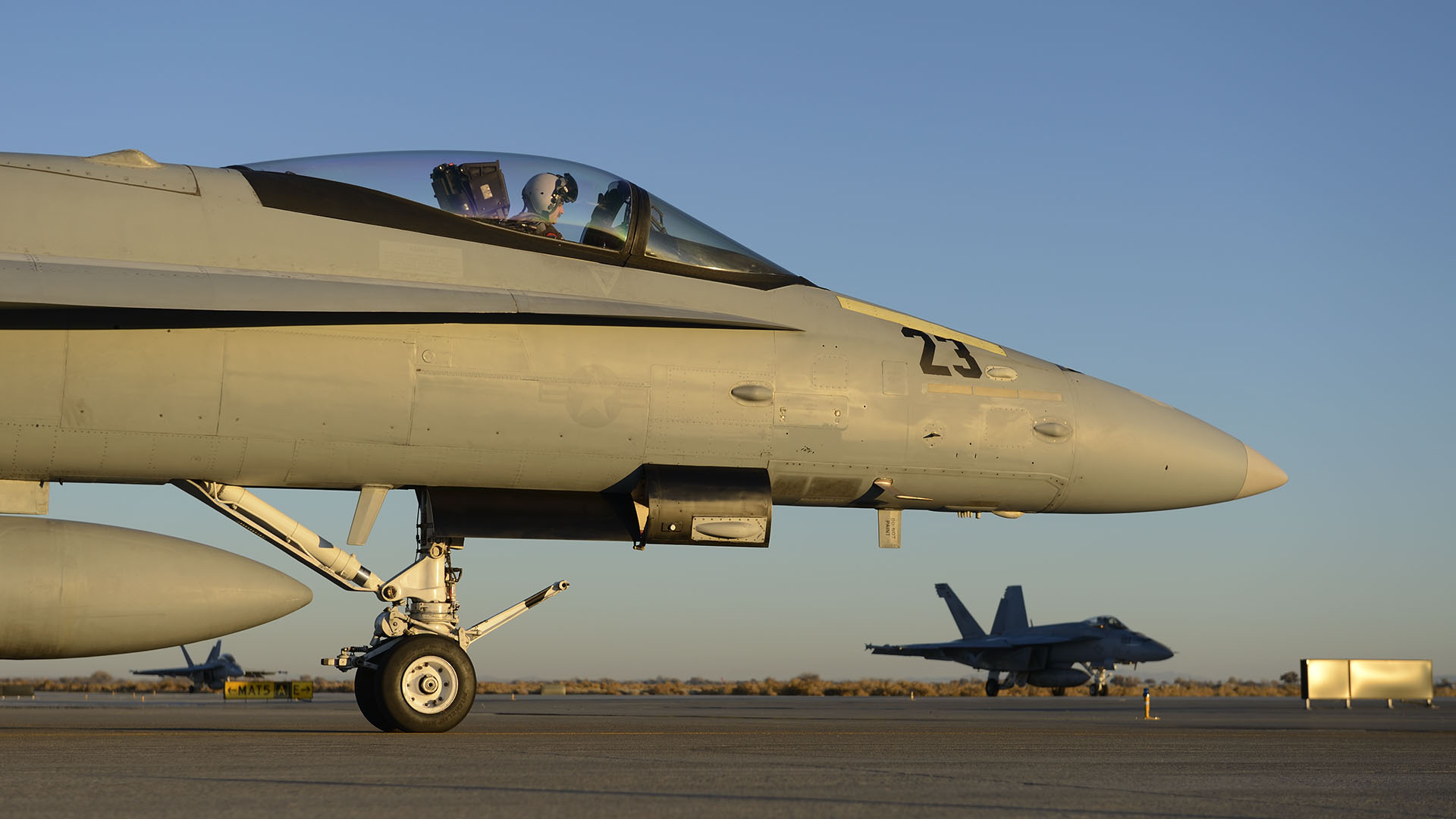
TOPGUN has no F-35Cs assigned. The students fly aircraft from their own unit and many of the Lightning II sorties in Class 02-20 were flown over the Fallon Range Training Complex direct from NAS Lemoore, California, the home station of VFA-125 and VFA-147. This also provided the opportunity for the students to rehearse missions in their resident simulators.
Notably, until now, the TOPGUN course has focused on live flying, however, the advent of advanced simulators and higher levels of security classification for the Lightning II means that a portion of events will likely have been completed in a synthetic environment, and this will only grow over time. The Navy is known to have looked at the Air Force Research Laboratory’s Secure Live, Virtual and Constructive Advanced Training Environment (SLATE) program, which could offer the kind of Live, Virtual, Constructive (LVC) training that will become a core part of TOPGUN and vital to fighter integration.
Blending synthetic training in simulators with aviators flying live missions enables a number of important functions. One of the most important elements for the F-35C is the ability to train with the weapons system being “full-up” in a secure environment, away from prying eyes that may be lurking on the training ranges and able to interpret sensitive information that is exhibited in live flying, such as radar and electronic warfare signatures and capabilities. The aircraft’s electronic warfare abilities may also be limited due to the training environment and where that training is happening, as well.
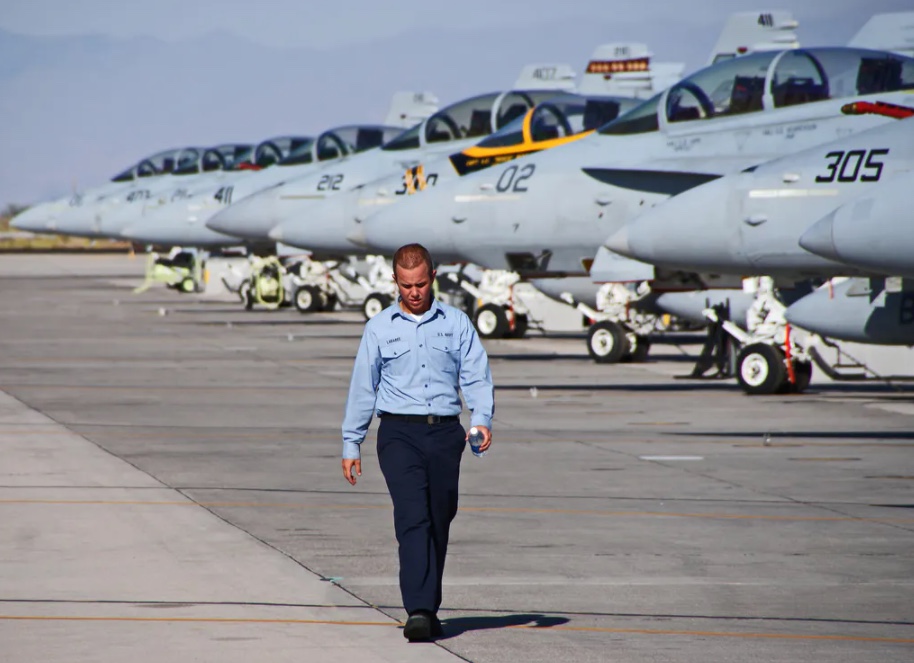
LVC also allows new capabilities to be blended in and scenarios to be explored without having to bring all the physical elements together. For example, an F-35C pilot in a simulator at Lemoore could theoretically train with a pilot flying a live mission over the Fallon ranges in an F/A-18, at least up until within visual range. Or, threats could be added virtually in order for the pilot to practice the latest prescribed reactions to them.
However, live-flown BFM remains a key element of the TOPGUN syllabus, with an emphasis on the physical challenges of fighting in the cockpit. Synthetic training aids will be useful for pilots learning how to transition from beyond visual range (BVR) into the close-in arena. The instructors place high emphasis on how to take advantage of the adversary’s mistakes and turn that into an offensive advantage, something that’s notoriously tough to replicate in the simulator with anywhere near the fidelity of actually flying against an opponent.
The BFM phase is designed to refine the student’s skills when maneuvering the aircraft at high G-forces, while maintaining sight on the opponent and beating them up in the proverbial ‘knife fight in a telephone booth.’ Students go head-to-head with TOPGUN instructors, initially in similar types, before the nimble NAWDC F-16A/B “Vipers,” with significantly higher thrust-to-weight ratio, are drafted in to up the ante. The students and instructor pore over these BFM missions in extreme detail during lengthy debriefing sessions after each mission, the importance of which cannot be overemphasized.
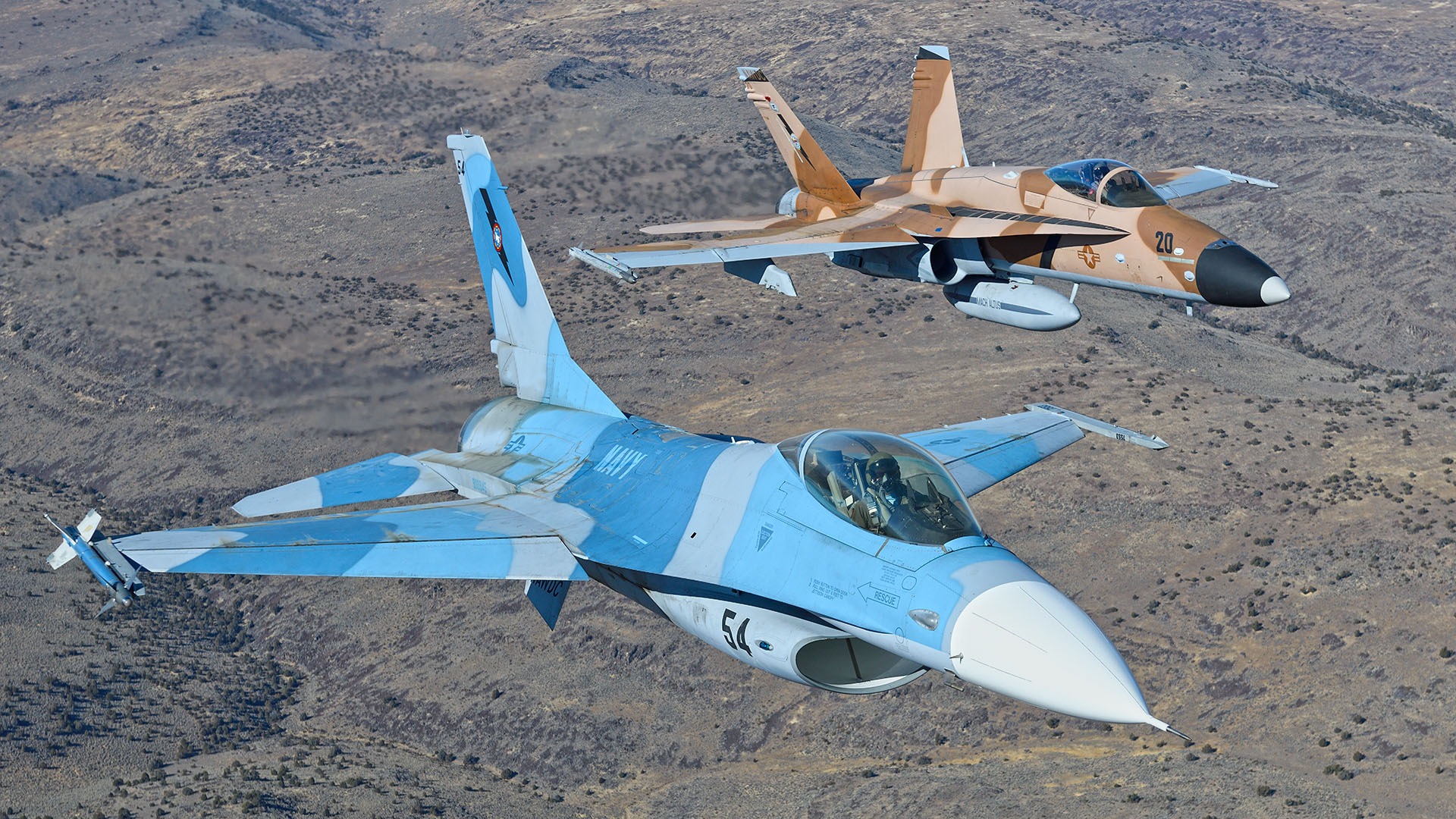
The long-range BVR engagements are likely to be where the biggest changes have come to TOPGUN when it comes to the inclusion of the F-35C. Gone are the traditional scenarios of detecting an opponent at range via radar and playing a cat-and-mouse game with AIM-120 Advanced Medium-Range Air-to-Air Missiles (AMRAAMs). The stealthy F-35 can theoretically operate with some impunity if it is in full low-observable configuration, picking off its foes without ever being seen, or at least without being detected in such a way that an enemy can land a deadly blow first.
The traditional transition from long-range into close fighting is another area likely to have presented particular challenges for the TOPGUN staff. The F-35B and C don’t feature an internal gun like the F-35A and must carry the podded GAU-22/A cannon if required for the mission, which also negates the aircraft’s stealth capabilities when fitted. All F-35s also carry their close-range, air-to-air heat-seeking AIM-9X Sidewinder missiles
externally, which also degrades the jet’s stealthy radar signature when fitted. This poses a major challenge for any type of F-35 in its ability to transition from long-range stealthy silent attacks, into close-range fights. Basically, the aircraft would be employed very differently in air-to-air combat when its signature is compromised with Sidewinders fitted externally compared to when they are not. Just being limited to the internally carried AIM-120 AMRAAM missile alone is a big difference.
It’s very possible that TOPGUN has introduced tactics that focus on using the AMRAAM within visual range, to allow a stealthy-configured F-35C to move between the two regimes. It’s a known tactic that has been used in combat, notably by TOPGUN graduate Navy Lieutenant Commander Michael “Mob” Tremel over Syria in June 2017. Part of TOPGUN’s charter is to address these kinds of issues, to find fixes and to promote best practices. These unique issues with the F-35C are exactly what TOPGUN experts will have scrutinized and fed back into the system in order to evolve the syllabus.
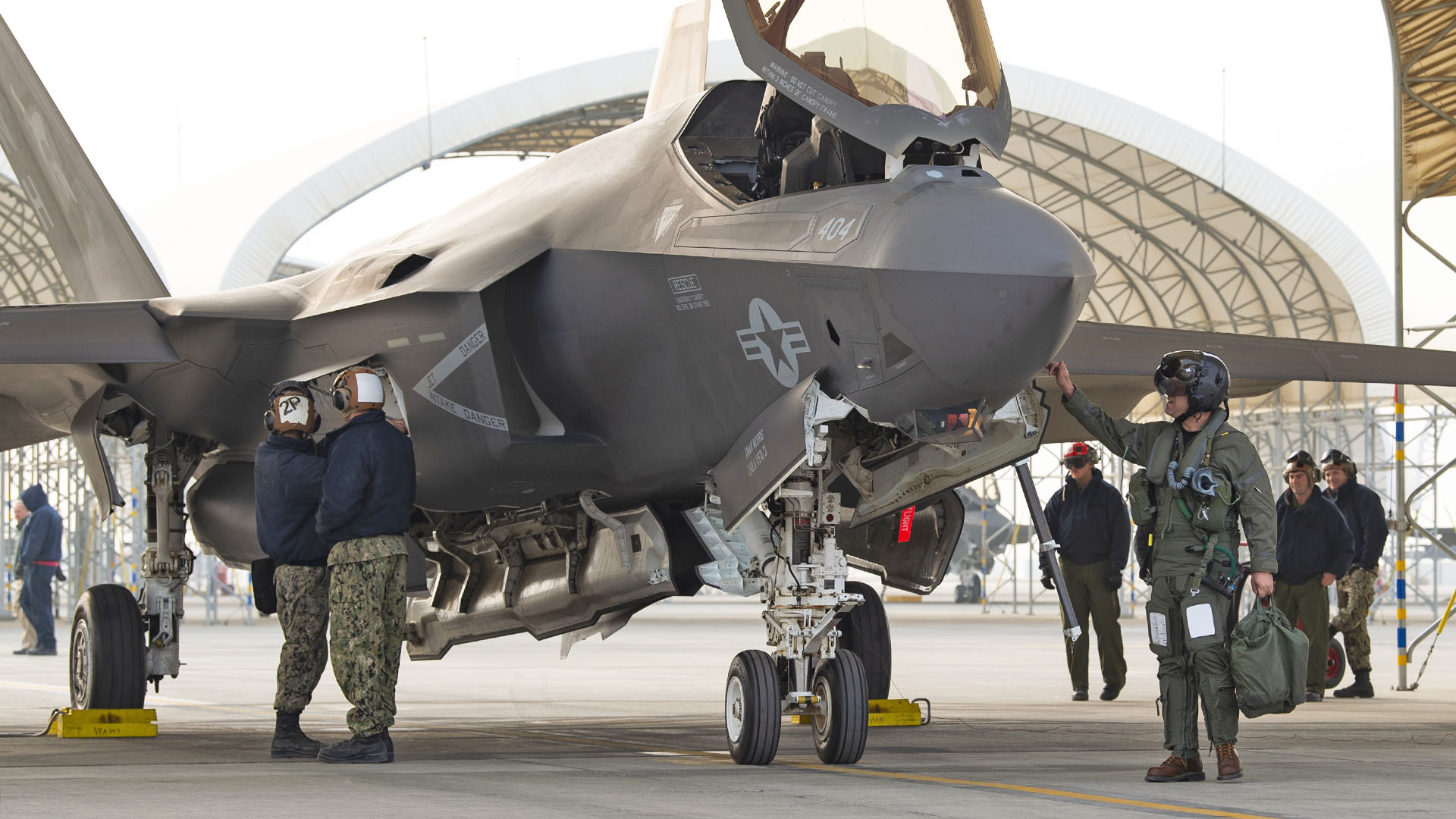
NAWDC executed a dry run of the syllabus in late 2019 using just TOPGUN instructors, before the first live course with students started earlier this year. Moreover, Air Test and Evaluation Squadron Nine (VX-9), the “Vampires,” played a major part in building the F-35C into the TOPGUN course, especially given its wide spectrum of operations.
The F-35C adds a deep strike into highly contested environments capability to the carrier air wing, but in addition, the aircraft will fly Destruction of Enemy Air Defense (DEAD) alongside its Offensive Counter-Air (OCA) and Defensive Counter-Air (DCA) mission sets.
Other changes the F-35C is likely to bring to the existing TOPGUN course include the use of stealth tactics in the BVR arena with the pilot acting as a battle manager, monitoring the 20 x 8-inch touch screen cockpit display, showing data sucked up via a dizzying array of advanced sensors. The F-35 pilot has a distinct advantage due to the aircraft’s extreme degree of sensor fusion. The jet’s AN/APG-81 active electronically scanned array (AESA) radar, Electro-Optical Targeting System (EOTS), Distributed Aperture System (DAS), and its highly advanced electronic surveillance and electronic warfare suite work together to provide its pilot with unprecedented situational awareness. Altogether, the F-35C represents a significant leap in technology compared to the Navy’s Super Hornets that are currently in service.
Being a 13-week course, TOPGUN cannot offer the same levels of detail as say the six-month-long USAF Weapons Instructor Course (WIC) at Nellis. The complexity of the F-35C means that the syllabus that is taught at Fallon may need to expand or otherwise have added elements bolted on. TOPGUN’s focus on air-to-air combat may not ideally lend itself to the kind of advanced mission package leadership that deep strike missions could require. However, TOPGUN’s work with the F-35C will be influential in building the corporate knowledge that is required within the U.S. Navy that leads to successfully employing the full capabilities of the jet.
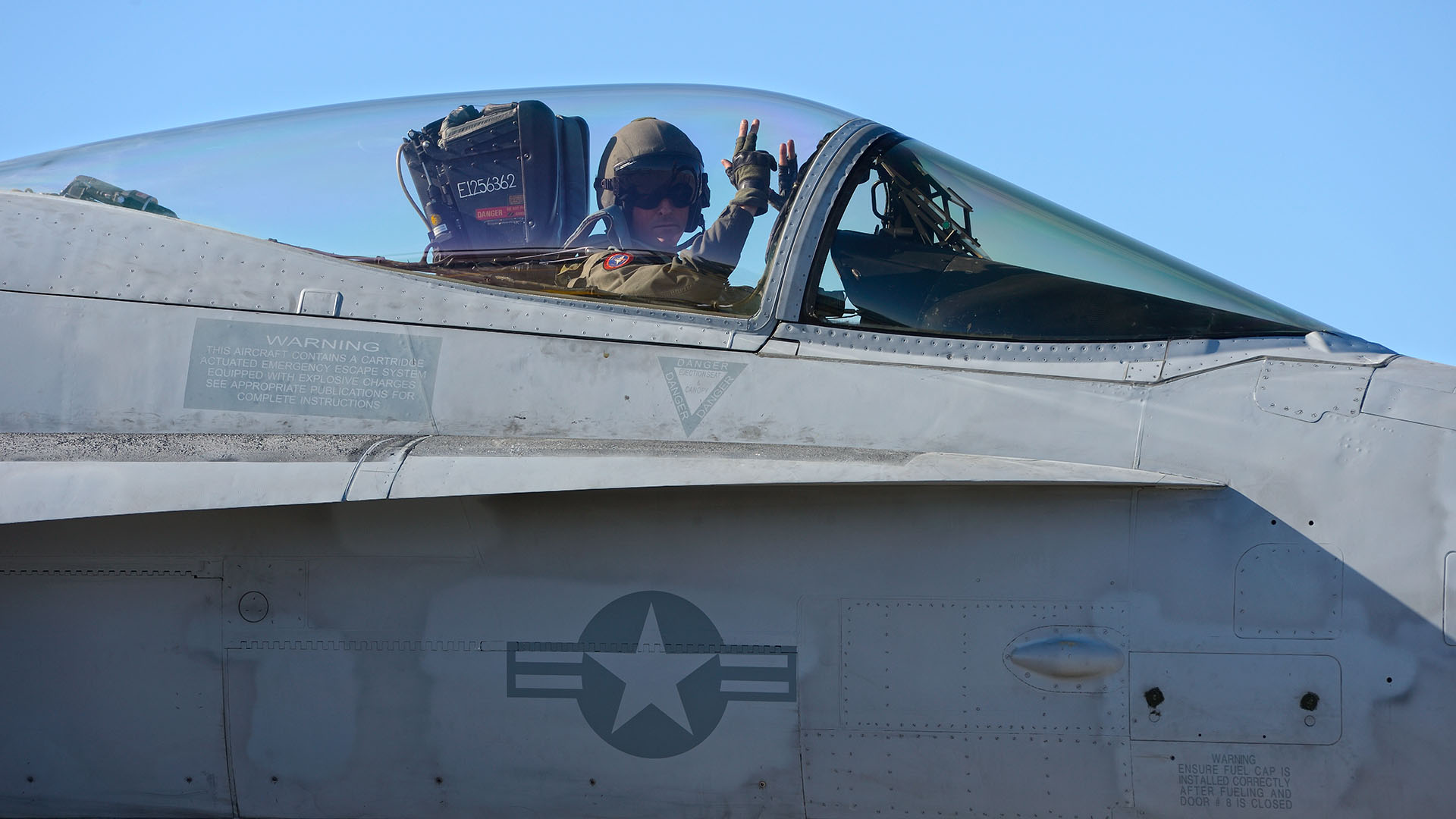
Commander Myers added in the NAWDC release:
“Graduating Strike Fighter Tactics Instructors allows us to accelerate learning by feeding TOPGUN training back to the fleet, elevating the lethality and survivability of both the individual aircraft as well as the Carrier Strike Group. The Lightning II proved its value to the Navy during every phase of the TOPGUN course, and its integration with the F/A-18E/F Super Hornet, EA-18G Growler and E-2C/D Hawkeye demonstrated that the powerful combination of 4th and 5th generation fighters, with advanced electronic attack, and command and control, is a force-multiplier against advanced threats.”
Since completing the TOPGUN course in May, Heinz and Goodwin have returned to instruct and train their squadronmates, with a particular emphasis on ensuring that pilots will have the requisite skill sets to effectively employ the F-35C during its first operational deployment.
In a media release from NAS Lemoore, Lieutenant Goodwin said:
“Our focus is on assisting the SFTIs at the operational fleet squadron pushing the big picture tactics and ensuring that everything is ready to go for the first and subsequent F-35C carrier deployments. The idea is that VFA-147 SFTIs can use the standards of tactical execution we provide to train their own people and take that knowledge with them through deployment. We are here to ensure that they are set up for success.”
“While my role as an F-35C instructor is still primarily focused on the students at the FRS, my perspective on what I teach and how I teach it most certainly has grown since completing TOPGUN,” added Maj Heinz. “I’m still training students to fly the aircraft, it’s just now I have the additional responsibility as an SFTI to bring that advanced training to the fleet, while helping maintain the TOPGUN training syllabus and ensuring standardization of training for all instructors. We are always working to maintain the highest standards of training.”
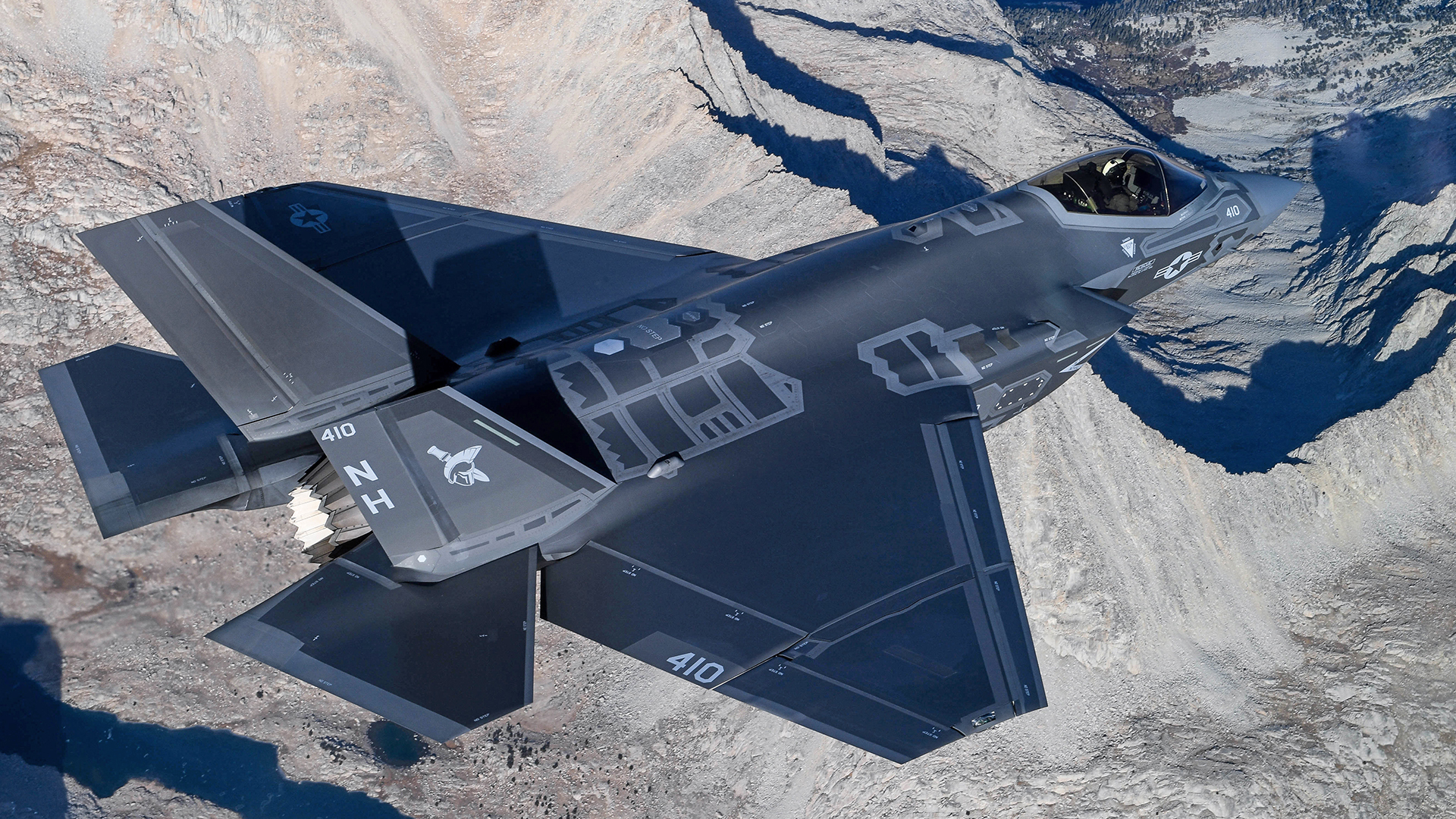
Since the stand up of Commander, Joint Strike Fighter Wing in August 2018 at Lemoore, the program has declared Safe-for-Flight Operations Certification (SFFOC) for both VFA-147 and the USMC’s first F-35C unit, Marine Fighter Attack Squadron 314 (VMFA-314), the “Black Knights.” VFA-147 is now preparing for the first-ever F-35C carrier deployment, as part of Carrier Air Wing Two (CVW-2) aboard the Nimitz class aircraft carrier USS Carl Vinson (CVN-70) next year. Navy Captain Adan Covarrubias, Commander of Joint Strike Fighter Wing, said in a release:
“The tactics that were developed during this first F-35C class are currently being integrated into the carrier air wing’s work-up cycle, truly making them a more lethal carrier and air wing of the future.”
Completion of the first F-35C course at TOPGUN was very well-timed. VFA-147 recently arrived en masse at NAS Fallon to begin the squadron’s work-ups for the forthcoming carrier deployment, complete with its new TOPGUN-graduate Strike Fighter Tactics Instructor, who is already setting the pace for the squadron. Considering the unit could find itself called into combat in any of many hotspots around the globe during the type’s very first cruise, having a recent graduate from TOPGUN in its ranks gives the Argonauts a huge advantage.
It will greatly help ensure that whatever missions the squadron may be tasked with are successful and that every F-35C pilot comes home alive.
Author’s Note: The WarZone reached out to TOPGUN to discuss the specifics of the new F-35 course, but operational security prevented any further comment.
